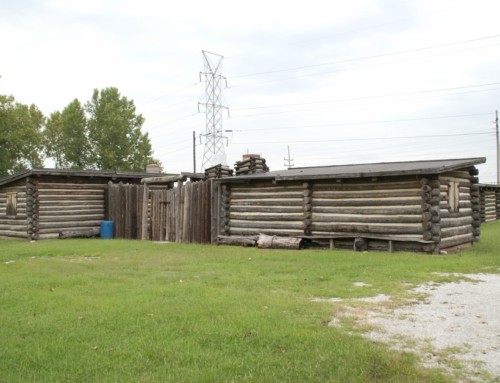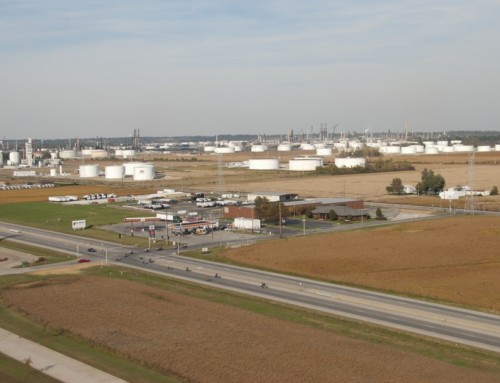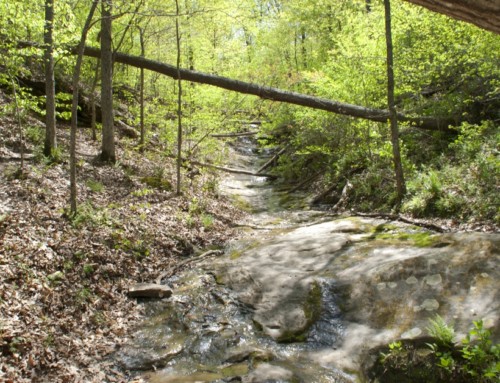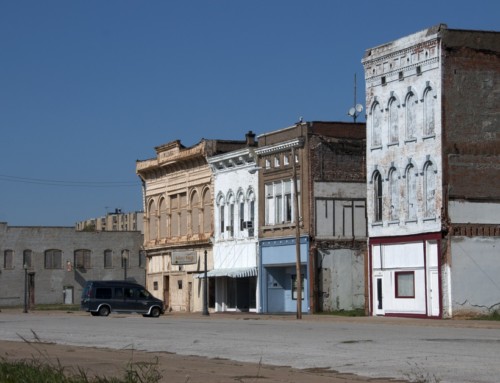Introduction
The third leg of the old Tri-Cities region (with Madison and Granite City), Venice has been around longer than the other two but has arguably suffered more as the area’s factories closed. The city today is a shell of its former self, having lost 70% of its peak population and most of its industrial base.
History
Ferry service began in 1804, but it wasn’t until 1841 that a village was officially laid out. In that year, Dr. Cornelius Campbell and Charles Stamps laid out the town and christened it Venice, apparently because water was such a regular visitor to the area. The young city got deeply submerged in the great flood of 1844 and flooded many more times until levees were built after the flood of 1903.
By 1870, Venice had grown to 350 residents who supported two general stores, a drug store, a hotel, five blacksmiths, and two wagon shops. The town had a flour mill and sawmill and was a busy hub for stagecoaches. Two ferries ran two trips every hour to St. Louis. The site of the original village was too close to the river, though, so it eventually washed away.
Venice incorporated as a village in 1873 and as a city in 1897, just a few years after a major railroad switching yard was built for the new Merchants Bridge. A huge power plant, the Venice Power Station, opened in 1910 to generate electricity for streetcars, homes, and businesses in Tri-Cities area. Main Street, which ran near that power station, was basically a few blocks of bars where gambling was nearly as frequent as drinking.
Still, Venice was a modest place to live. One writer described early 20th-century Venice as the “Least prepossessing of the Tri-Cities” in a not-too-scenic location that “…lies amid industrial sites and mazes of railroad tracks.” Not exactly Chamber of Commerce-quality advertising copy.
Some of Venice’s isolation ended in 1938 when a viaduct was built over some of those railroad tracks, eliminating the need for people and cars to cross nine separate tracks. The Terminal Railroad Association paid for the viaduct after years of lobbying from local officials.
From the looks of things, those local officials didn’t turn over very often. Dr. John E. Lee, Sr. was first elected mayor in 1911 and served until 1915. In 1917, he was elected again and was still mayor when he died on December 8, 1944. Like father, like son, so the saying goes, and it so went for the Lees. The long-time mayor’s son, Dr. John E. Lee, Jr., won election in his own right in 1957 and served as mayor until his death on November 30, 1973. That least prepossessing town had outsized political influence, however, especially in Democratic politics. John Kennedy made a campaign stop in Venice during the 1960 campaign, and other national Democratic politicians stopped by Venice to motivate voters.
Even though Venice was a small community, it was divided into north and south by railroad tracks. North Venice was part of the Madison school district and had a Madison address, but it got fire and police protection from Venice. The Lee Wright housing project was built on the west side of north Venice; all of the residents were African American, but the rest of north Venice, which also bordered the African American neighborhoods of West Madison, was exclusively white. North Venice began to integrate in the late 1950s, while south Venice was exclusively white until the early 1970s.
Venice established two high schools in 1917, one (Venice High School) for White students and another (Lincoln High School) for Black students. Venice slowly desegregated its schools, integrating one grade each year beginning with the 1963-64 school year. Both high schools had some success in basketball before integration (each won a few district titles), but after integration, the school did very well for a while, winning two state championships. The city, though, couldn’t afford to keep Venice High School open as people moved away and enrollment dropped; it closed in 2004.
Only recently did the federal government disclose that a whole bunch of uranium was processed in the St. Louis area from the early days of nuclear weapon development. One of the processing facilities was the Dow Chemical plant on the Madison/Venice border. From 1957 to 1961, the plant processed uranium for Mallinckrodt on behalf of the US Atomic Energy Commission. The same factory built tanks during World War II. Dow purchased it from the government after the war.
The plant produced more waste than it could burn, so the company buried tons of radioactive sludge in fields near the plant and surrounding neighborhoods. They also dumped as much as 50 pounds of radioactive sludge a month directly into the sewers. Beginning in 1989, Dow and Consolidated Aluminum (Conalco, the building’s owner at that time), quietly cleaned up the site. In three years, they dug up 105,000 tons of soil contaminated with radioactive thorium and shipped it by rail to a radioactive waste facility in Utah. Many people who live near that old processing facility believe they were exposed to radiation.
Venice today has lost most of its industrial base (it never had much retail) and nearly three-quarters of its population. The city today is overwhelmingly African American, with nearly 40% of the population living below the poverty line.
**Venice is covered in Road Tripping Along the Great River Road, Vol. 1. Click the link above for more.Disclosure: This website may be compensated for linking to other sites or for sales of products we link to.
Resources
- Venice Public Library: 325 Broadway; 618.877.1330.
- Post Office: 408 Broadway.
Community-supported writing
If you like the content at the Mississippi Valley Traveler, please consider showing your support by making a one-time contribution or by subscribing through Patreon. Book sales don’t fully cover my costs, and I don’t have deep corporate pockets bankrolling my work. I’m a freelance writer bringing you stories about life along the Mississippi River. I need your help to keep this going. Every dollar you contribute makes it possible for me to continue sharing stories about America’s Greatest River!
©Dean Klinkenberg, 2024, 2021, 2018,2013,2011






